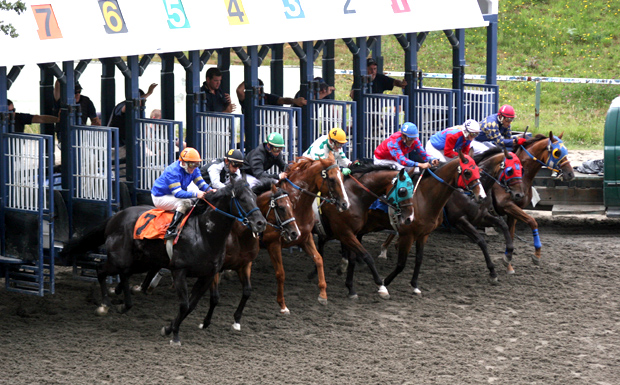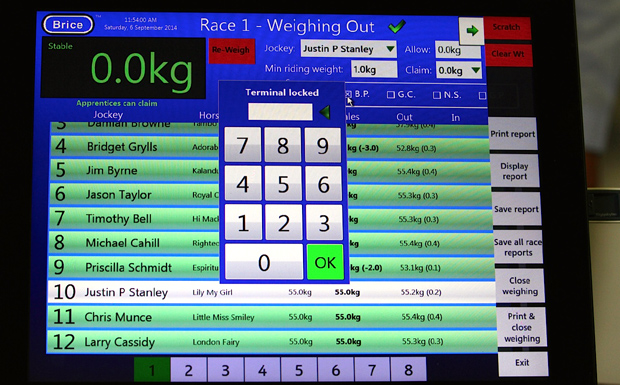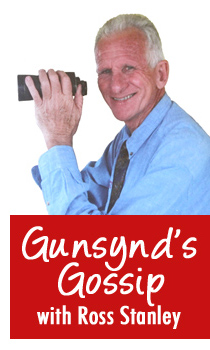
Nothing beats being there. If you want to appreciate the actual speed of a fast-bowler’s delivery or the power of a Roger Federer forehand, you should be a first hand witness.
Television provides a wonderful presentation but the angles can also reduce the full-on realities of those exhilarating seconds of pace and power.
Racing is the same.
Contemporary close-up coverage makes it easy for punters to track their investments. But a more complete experience is missing.
Trackside time can be very engaging.
If you are a novice racegoer heading to the Nanango meeting on Saturday week, the following guiding points may enrich your day:
Arrival
You need to buy a program.
This booklet, more traditionally known as a race book, contains all the recent form and general details for each horse.
At Lee Park, you would go to the large whiteboard in the betting ring to mark the scratchings (non-runners) and add any missing jockeys.
The Form
There will be a page in the book that explains what all the abbreviations mean.
Maybe tick a few horses in each race to ponder over race by race.
Country race crowds are very friendly. Don’t hesitate to ask questions.
The Lead-Up
Depending on the design of the course, you may or may not have access to the race day tie-up stalls.
Because there is a large horse walking area between the public amenities and the stalls at Lee Park, access through it is considered unsafe except for officials and licensees.
However you can watch horses in this pre-parade area.
If the track you attend does permit patrons getting close to the waiting starters, it is well worth a stroll. It can be fun to watch a horse being saddled, then parading, competing and cooling down back at the stall.
The Mounting Yard
About ten minutes before the starting time, candidates come into the main parade where jockeys will link up with them.
With about five or so minutes to go, the horses go on to the track and head for the barriers, usually passing in front of the spectator area en route to the gates.
Runners often exhibit vital clues to their chances during this period.

Decision Time
There a few key points to monitor.
Firstly horses that seem very stirred, flighty and troublesome are expending nervous energy. The warning is that they will have run their race before they even start.
Also be alert to runners that cause problems after the jockey is aboard.
They can settle down if assisted by the clerks of the course – they respond to the company. But if this fails, give them a miss (yes, some will go on to win but they are in the minority).
Secondly, horses are creatures of habit. If a horse has a great record at a particular track, distance or state of going (wet or dry), that is a box-ticking notion.
Thirdly, check to see if a horse is resuming after a break. If it is and it has what is called a good “first-up”, it should be considered.
Of course, if it has been away for a year or so, it will probably need more time to get fit.
Betting
If the fancy is likely to be a short-priced favourite, you are generally better off putting your money on early because others will form the same opinion.
Otherwise, it is a waiting game.
Odds should lengthen as the market settles down. Bookmakers have their guard up early in case someone comes in for a hit.
If there are eight or more runners, then each way betting (win and place) is a comfortable way for beginners to operate.
“A dollar each way” costs two dollars as there is one on for a win and one for a place, and place odds are about a quarter of the win odds.
If you back a loser, hold on to the ticket until “correct weight” is announced. This is in case there is a protest or the jockey cannot make the right weight when they step on the scales after the race.
A fun way for a novice group to add interest their day at little expense is to have “Kitty Fun”.
Each person puts in, say, five dollars into the pool and each player has two choices per race. You have a scoring sheet and a win gets five points, second earns two and third picks up one.
The top points scorer gets the kitty at the end of the day.
The Climax
Do watch a race from the rail near the winning post – it is the zone of ultimate excitement.
Wait there until the horses come back.
After the judges numbers have been displayed, the gate will open.
If it is a close photo, it is fun to go through the anticipation with the jockeys.
The Post-Race Joy And Sorrow
You can get quite close to the area where the placegetters are unsaddled.
The steward will give a sign to the first five placed riders that they can dismount, and the ensuing conversations are great to take in.
Horses will not leave they enclosure until the all-clear of “correct weight” is given.
It is then time for you to celebrate your undoubted success or lick your wounds, think about what you have learnt and try again.
Good Luck!
























